#Nell Painter
Text

I am loving this book.
6 notes
·
View notes
Text
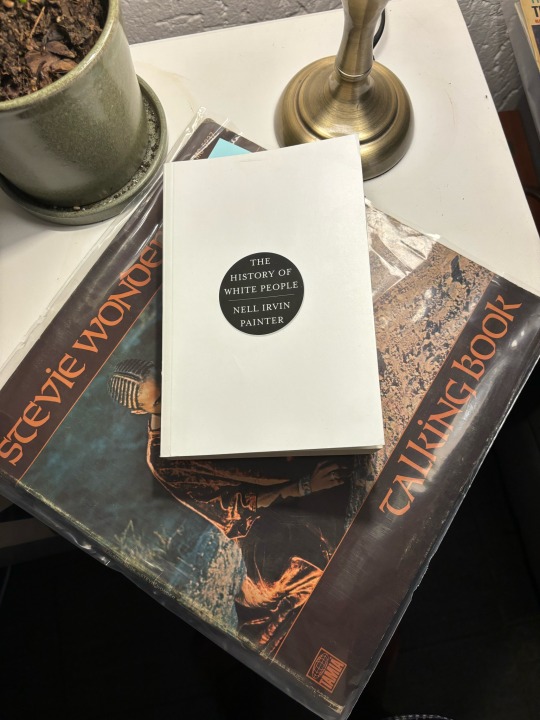
october/november read
6 notes
·
View notes
Text
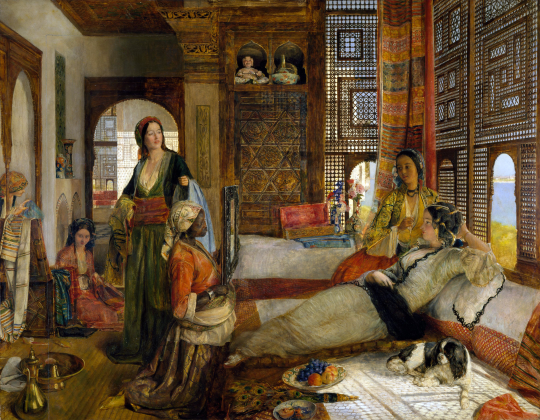
John Frederick Lewis (English, 1804-1876)
The Harem, 1876
Birmingham Museums Trust
Slavery gave rise to the figure of the Odalisque, that is the beautiful, white slave girl, a figure of quintessential beauty. Learn more; “Why White People are Called Caucasian.” - Professor Nell Painter of Princeton University
#John Frederick Lewis#1800s#art#fine art#european art#classical art#europe#european#fine arts#oil painting#europa#the harem#odalisque#English art#english#island kingdom#england#british#british art
72 notes
·
View notes
Text



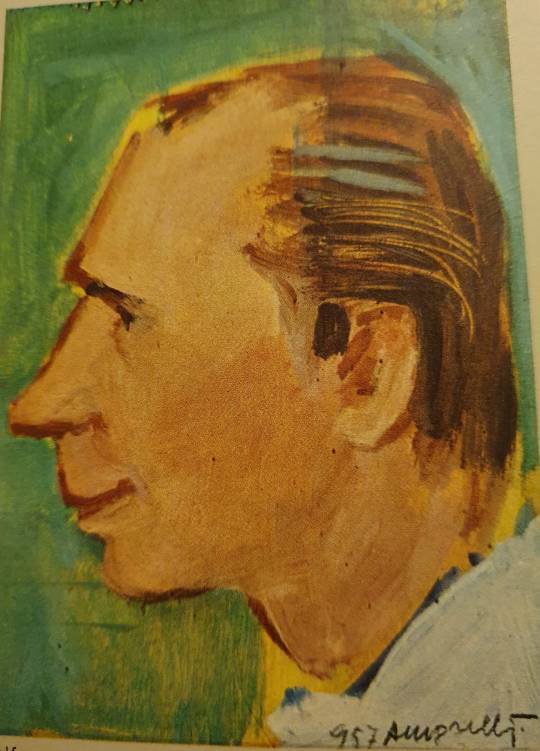

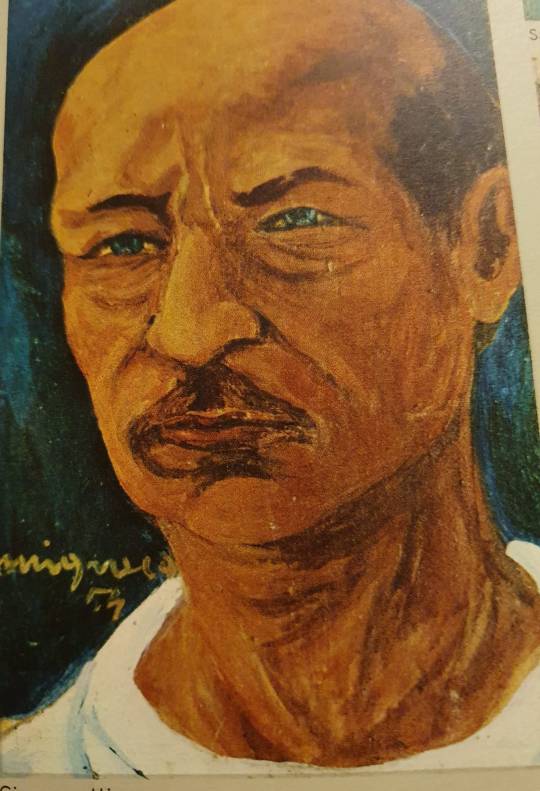
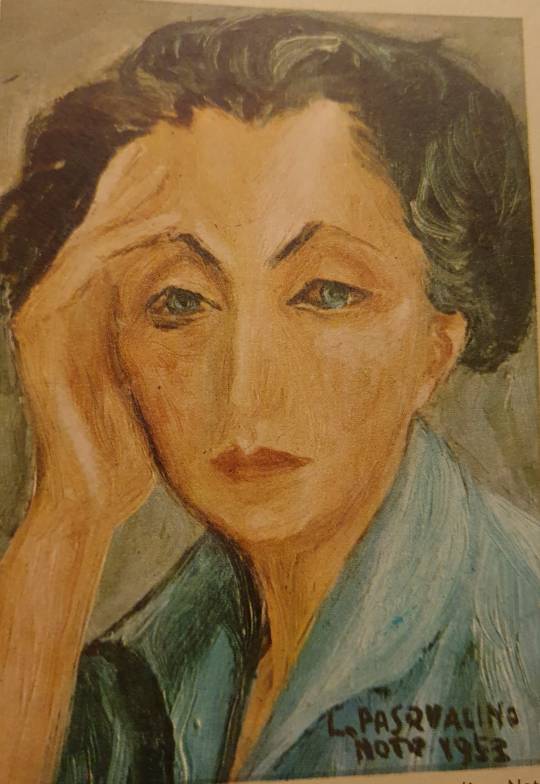

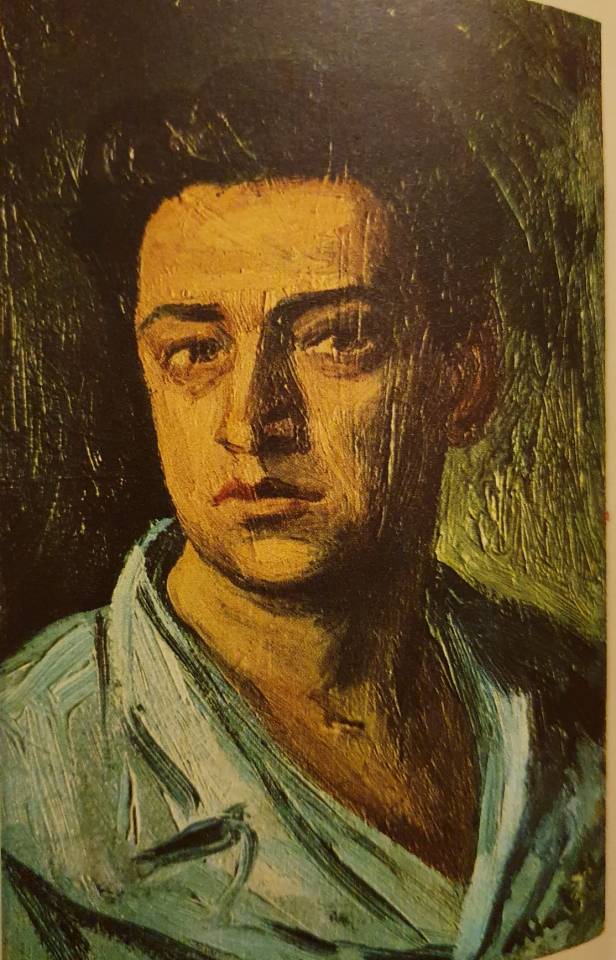
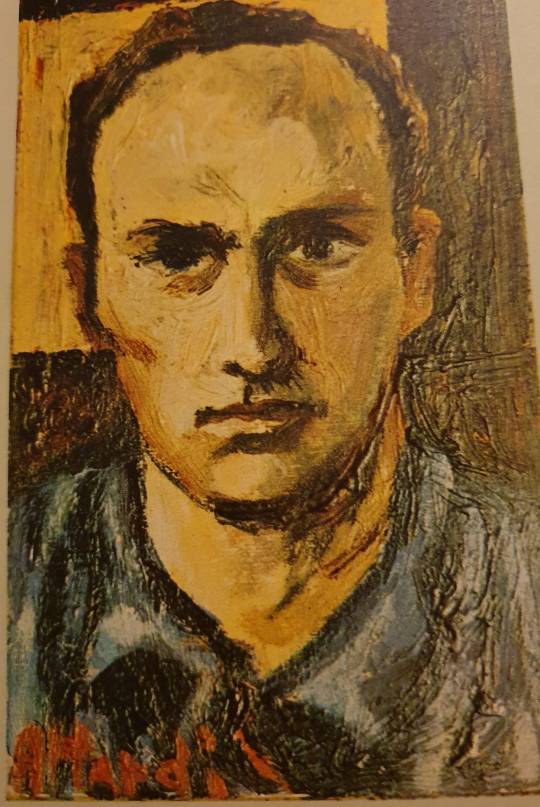
Autoritratti dei pittori siciliani Daniele Schmidt, Pippo Rizzo, Gagliardo, Alfonso Amorelli, Bruno Caruso, Giuseppe Migneco, Lia Pasqualino Noto, Martinelli, Saro Mirabella, Ugo Attardi
Verso l’inizio degli anni ’50, Salvatore Salvia De Stefano ebbe l’idea di collezionare gli autoritratti degli allora pittori viventi. Chiese aiuto ad amici galleristi e pittori per poter convincere i pittori che non conosceva a dipingere un loro autoritratto secondo il loro stile e la loro poetica. Il problema era che Salvia chiedeva questo autoritratto in un cartoncino di 15 per 18 centimetri di lato, quindi minuscolo e, per chi era abituato a grandi tele e opere ad ampio respiro, quasi limitativo. Non di meno, essendo un’opera minimale, la realizzazione degli autoritratti era sempre rimandata. Alla fine comunque Salvatore Salvia riuscì a raccogliere un buon numero di dipinti, ognuno ritratto umano ed artistico dell’autore. Una raccolta che passava da grandi pittori come Guttuso o Alliata a pittori minori ma pur sempre isolani nel tratto e nelle sembianze. Dove sia questa raccolta, non ve lo dire. Non appare in nessun museo o raccolta d’arte. C’è solo un piccolo libro che ne parla. Anche Salvatore Salvia è scomparso nel nulla tanto che neanche Wikipedia lo cita e di tutta la sua raccolta di “cose siciliane” non si sa più nulla. Alle volte l’amore non sopravvive a chi ama, anche se il soggetto di quest’amore immenso e totale, la Sicilia, resta è ancora madre di artisti e di grandi, sconosciuti, amanti dell’arte.
Self-portraits of the Sicilian painters Daniele Schmidt, Pippo Rizzo, Gagliardo, Alfonso Amorelli, Bruno Caruso, Giuseppe Migneco, Lia Pasqualino Noto, Martinelli, Saro Mirabella, Ugo Attardi
Towards the beginning of the 1950s, Salvatore Salvia De Stefano had the idea of collecting the self-portraits of the then living Sicilian painters. He asked for help from gallery owner and painter friends to be able to convince painters he didn't know to paint a self-portrait of them according to their style and poetics. The problem was that Salvia asked for this self-portrait in a cardboard measuring 15 by 18 centimeters on each side, therefore tiny and, for those used to large canvases and wide-ranging works, almost restrictive. Nonetheless, being a minimal work, the creation of the self-portraits was always postponed. In the end, however, Salvatore Salvia managed to collect a good number of paintings, each a human and artistic portrait of the author. A collection that ranged from great painters such as Guttuso or Alliata to minor but still Sicilian painters in terms of style and appearance. Where this collection is, I won't tell you. It does not appear in any museum or art collection. There is only one small book that talks about it. Salvatore Salvia also disappeared into thin air, so much so that not even Wikipedia mentions him and nothing is known about his entire collection of "Sicilian things". Sometimes love does not survive those who love, even if the subject of this immense and total love, Sicily, still remains and is the mother of artists and great, unknown, art lovers.
13 notes
·
View notes
Text
I got tagged by @battydings! Thanks!
Tag (9) people you would like to know better.
Last song: The Sims 2 Ultimate Collection Soundtrack (it's good music for doing mindless work).
Currently Reading: Latino-Americans by Ray Suarez, African Kingdoms of the Past (series) by Kenny Mann, First Peoples in Canada by Alan D. McMillan and Eldon Yellowhorn, Hood Feminism by Mikki Kendall, India A History by John Keay, The History of White People by Nell Irvin Painter, The House of Dudley by Joanne Paul, and I want to try Circe by Madeline Miller.
Currently Watching: House of the Dragon. Again.
Current Obsession: The Terminator series.
I tag: @meilas @pureanonofficial, @symphony-in-a, @from-aldebaran, @toru771, @emotionalmotionsicknessxx, @box5intern @marleneoftheopera, @roadtophantom
7 notes
·
View notes
Text




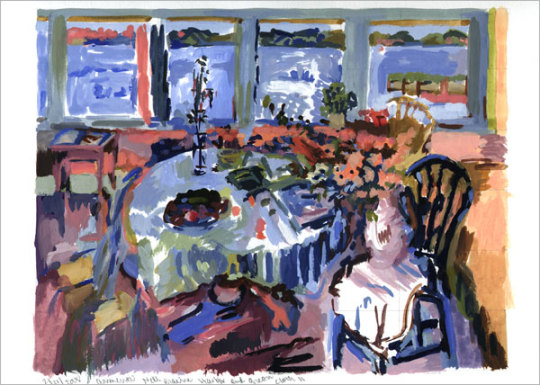


Nell Blaine’s (1922-1996) life is an inspiring story of action and indomitable spirit. Her life and art was a triumph over the greatest difficulties. In 1942, at age 19, she left home in Virginia for New York City, ignoring her mother’s tears and threats to have her committed if she did. As a teenager Blaine was an academic realist but quickly evolved into an abstract painter in New York. She became a student of Hans Hofmann, showing up at his studio on her first day in the city with suitcase in hand directly from the bus station. Through his school she made important connections with avant-garde artists and dealers. She supported herself meagerly through sales of paintings and commercial design.
Her work was informed by jazz rhythm and improvisation. Learning to play drums influenced the way she held paint brushes and viscerally handled paint. She sought an inner rhythm for the act of painting. She painted all over at once and believed in not tampering with the painting after the fact. In the 1950s Blaine’s imagery returned to representation. The large scale and dynamic attack of her work was physically demanding to create.
At age 37, while painting in Greece, she contracted polio. She was restricted to a wheel chair and had limited strength in her arms. After long and difficult rehabilitation, she resumed painting. Dedicated friends assisted her for the rest of her life.
In “Nell Blaine, Her Art and Life”, Sawin observes that with the emergence of Pop Art in the 1960s, an expected consolidation of Abstract Expressionism and European tradition did not materialize. Instead there was “… a headlong rush into novelties…”. The art world has yet to change course. However, Nell Blaine achieved her own synthesis. She believed in showing pleasure in her paintings rather than the pain, anxiety, and financial stress she suffered. Nell Blaine’s art is a celebration of sight, color and form, and miracles of the commonplace in daily life. https://www.larainearmenti.com/2008/03/nell-blaine/
4 notes
·
View notes
Note
Has it ever occurred to you that maybe you're just a complete idiot making up shit and that you don't know what you're talking about because you would rather worship an edgy white dudebro than identify with WOC characters?
Anon, you have one week to read your choice of the following books. I expect a full report on the issues the author is attempting to educate you on, why it's important, who benefits from the general public's lack of knowledge, and the many ways in which people fail to self-reflect on their behaviors when it comes to the well being of other people
White Fragility: Why It's So Hard For White People To Talk About Racism by Robin DiAngelo
Freedom Is A Constant Struggle by Angela Y. Davis
The New Jim Crow: Mass Incarceration in the Age of Colorblindness by Michelle Alexander
Sojourner Truth: A Life, A Symbol by Nell Irvin Painter
Black against Empire: The History and Politics of the Black Panther Party by Joshua Bloom and Waldo E. Martin Jr.
If you find a book that fits this subject that you would rather read, submit it for approval by Thursday
If you continue to accuse me without any evidence or providing adequate entertainment, consider yourself a failed student. Should this occur, any further messages will be deleted
Prove that you have a better intellect than a baboon throwing shit at the wall. Good luck. I think you'll need it
#rwde#i am not joking. send me all the anon hate you want but if it aint creative or unique it aint getting posted#if it does not have any meat i will not bite#like seriously. i didnt mention anyone outside of shawcross and luna in my post and this is the take you wanna fling? aight#i was talking about the white fang as a whole ass organization#which spoilers includes sienna and ilia#so youre the one blocking out the women if youre conflating the entire WF group w adam#i bet you can't even think of any black activists outside of mlk jr and malcolm x#do you even know who sojourner truth is??? highly doubt it#this kinda shit is how we all know youre white as hell#you dont actually give a flying fuck abt the issues women of color face#you just want a moral shield to beat people w then whine when you get called out for obvious bs#if you care abt women then work with local politicians to establish healthcare rights#if you care abt poc then protest in the streets w them whenever the police go too far#or better yet. intervene before someone gets put into a grave#use your white privilege to shield actual fucking people instead of being a whitebread dumbass#anon hours
14 notes
·
View notes
Text
BY CHAUNCEY DEVEGA
Ron DeSantis is not a "mini-Trump" or some other diminutive. He is much more dangerous. Donald Trump has no "ideology" beyond megalomania and a deep desire to be an American god king. By comparison, DeSantis is far more intelligent and devious; he is an ideological fascist and racial authoritarian.
In a recent essay at Raw Story, Thom Hartmann summarized the danger to American democracy and society embodied by DeSantis:
Historians and political observers have been predicting that America would get our very own Mussolini ever since the days of Barry Goldwater. And there's been no shortage of candidates: bribe-taking Nixon; Central American fascist-loving Reagan; Gitmo torturing and war-lying Bush; and, of course, Trump.
But with Ron DeSantis, we may finally be facing an all-American politician who has Mussolini's guile, ruthlessness, and willingness to see people die to advance his political career, all while being smart and educated enough to avoid the easily satirized buffoonishness of Trump.
DeSantis and other Republican fascists have proclaimed Florida to be a bastion of "freedom" and "liberty." In reality, Florida is now a laboratory for fascism. As part of his authoritarian project, DeSantis is enforcing thought crime laws that forbid the teaching of AP African-American studies in high school and other courses and programs across Florida's school system (including at the college and university level) that examine questions of power, race and systemic inequality. DeSantis and his agents recently declared that the AP African-American studies course was inappropriate and will not be taught in Florida's schools because it has "no educational value" and is "indoctrinating" (white) young people. DeSantis and his regime's thought crime attacks on African-American studies are Orwell's "1984" meets "Birth of a Nation."
The purpose of DeSantis' thought crime laws is to intimidate and terrorize all teachers, educators, librarians, and others who are committed to education, critical thinking, and the truth in Florida (and beyond). In DeSantis' Florida — and soon to be across "red state" America if he and the other fascist Republicans get their way — there will be censors who review books and other material for thought crimes and other "dangerous" ideas that are contrary to the interests of conservatives. These censors and party officials and their designated agents will also rewrite history – and reality itself – to fit the demands of the regime. The public will no longer be able to discern truth from lies and fantasies from facts and fiction. The subversion and destruction of reality, facts, and the truth are a precondition for, and one of the primary ways that fascist and other authoritarian regimes obtain and keep power.
DeSantis' goal is to make America into a new Jim Crow Christofascist plutocracy. Donald Trump and Trumpism were just intermediate stops on that evil journey.
This is the power of censorship: people quickly learn to police their own behavior and that of their family, friends, neighbors, and yes, strangers. The public's intellectual, creative, ethical, and moral lives quickly become impoverished. The result is the ideal fascist authoritarian subject: a compliant person who does not resist.
Here is a partial list of the dozens of scholars, authors, and other public thinkers whose work has now been declared "illegal" and a "thought crime" by DeSantis and his agents and subsequently marked for removal from the AP African-American Studies course:
Kimberlé Crenshaw
Angela Davis
bell hooks
Ta-Nehisi Coates
Keeanga-Yamahtta Taylor
Nell Irvin Painter
Manning Marable
Cathy Cohen
Henry Louis Gates, Jr.
James Cone
Nikki Giovanni
Barbara Fields
These are not just names on a banned books list. These are real human beings who are committed to helping the public and their students be engaged and responsible members of a larger community and to develop critical thinking skills that they can use to challenge and interrogate Power with the goal of making a better, more just, and truly democratic society.
I personally have interviewed, been in dialogue with, enjoyed the company of, had meals with, or otherwise interacted with a good many of these "banned" authors and scholars. I and many others have greatly benefitted from their scholarship, wisdom, time, and concern.
Why are DeSantis and his agents (in Florida and across the country) targeting African-American studies and other such programs?
There are many reasons.
The Black Freedom Struggle is one of the most successful pro-democracy resistance movements in American (and world) history. DeSantis and the other Republican-fascists and their forces do not want these lessons to be known, learned, or otherwise disseminated. DeSantis is working to create a type of "regime of knowledge" where Black, brown and other marginalized people's triumphs and experiences are outright erased and/or grossly distorted as a way of literally removing their personhood and existence. History has repeatedly shown that "thought crimes," banned books and other forms of intellectual violence are precursors to and do the work of interpersonal and intergroup violence on a large scale by the State, and those empowered to act in its name, against those deemed to be "the enemy."
In all, Power intersects with and is an extension of knowledge production. And knowledge is not "neutral." Philosopher Michel Foucault explained as much. "There is no power relation without the correlative constitution of a field of knowledge, nor any knowledge that does not presuppose and constitute at the same time power relations." Foucault also explained that "Truth is linked in a circular relation with systems of power which produce and sustain it."
DeSantis attended Yale for his undergraduate degree. In all likelihood, he encountered the work of Foucault during his studies there. Now DeSantis is putting Foucault's powerful insights to work in ways contrary to their original intent.
In a recent interview at The New Yorker, contributing writer Keeanga-Yamahtta Taylor spoke with historian Robin D.G. Kelley about DeSantis' thought crimes regime and the targeting of African-American studies. Both Professor Taylor's and Professor Kelley's work was purged from the Advanced Placement African-American studies course. Kelley's comments merit being quoted at length:
There's two levels. One is that it's about Ron DeSantis possibly running for President. I think that's the most important thing, because, no matter what we think about DeSantis and his policies, we know he went to Yale University, and majored in history and political science with a 3.7 G.P.A., which means that he was at one of the premier institutions for history. That's why I get frustrated when people say he needs to take a class. He took the class. He knows better. He knows that the culture wars actually win votes. He's trying to get the Trump constituency.
So I think this is about Ron DeSantis wanting to run for President. But I also think that the focus on Florida occludes a bigger story. As you know, this goes back to the Trump years—well before Trump, but let's just talk about the Trump years—the attack on the 1619 Project, Chris Rufo's strategy of turning critical race theory into an epithet by denying it any meaning whatsoever. And creating a buzzword. That's actually a strategy that has nothing to do with the field of African American studies; it has everything to do with vilifying a field—attacking the whole concept of racial justice and equity. So, to me, if DeSantis never banned the class, we would still be in this situation. And although it is true that a number of states did accept the pilot program for the A.P. class, some of those same states have passed, or are about to pass, laws that are banning or limiting what they're calling critical race theory. So there is a general assault on knowledge, but specifically knowledge that interrogates issues of race, sex, gender, and even class.
It's an ongoing struggle to roll back anything that's perceived as diminishing white power. They want to convince white working people—the same white working people who have very little access to good health care and housing, whose lives are actually really precarious, as they move from union jobs to part-time, concierge labor to make ends meet—that somehow, if they can get control of the narrative inside classrooms, their lives would be better. Racism actually damages all of our prospects and futures.
I don't think it's an accident that the people who are targeted are you, Angela Davis, myself, bell hooks. To say that we're not radical would be a lie. What does radical actually mean? What it means, what Black studies is about, is trying to understand how the system works and recognizing that the way the system works now benefits a few at the expense of the many. It's easy to allow someone to come in, in the name of Black studies, and say, "We're going to talk about ancient Africa, and the great achievements of the Kush of ancient Egypt." That's not a threat—not as much as the idea of critical race theory saying that, no matter what policies and procedures and legislation are implemented, the structure of racism, embedded in a capitalist system, embedded in a system of patriarchy, continues to create wealth for some and make the rest of our lives precarious. Precarious in terms of money, precarious in terms of police violence, precarious in terms of environmental catastrophe, precarious in many, many ways. And I think people could agree with me that that's why we do this scholarship: because we're trying to figure out a way to make a better future. You know, that's the whole point. And if that's subversive, then say it, but it's definitely not indoctrination, because indoctrination is a state that bans books.....
[T]he subject of African American studies, even before it was called that, has been not just the condition of Black people but the condition of the country. And not just narrating that oppression and understanding it, and not just trying to think about ways to move beyond it—to transcend it, to come up with strategies to try to live—but also understanding what's wrong with this country, with the system.
We're not just interrogating our lives, we're interrogating knowledge production itself.
Dangerous thinking is a good thing and those with power want to socialize us into learned helplessness so that we will not see (and achieve) the radical possibilities of a true social democracy.
Years ago, when I was in high school and then college, I was lucky enough to have very generous teachers who took me on trips to conferences and other events at leading universities and institutions such as the Schomburg Center for Research in Black Culture. In fact, I was very lucky to have attended several conferences where Yosef Ben-Jochannan ("Dr. Ben"), who was one of the founders of African Studies, was the featured speaker. Those years that saw the Million Man March(es), debates about the merits of multiculturalism, diversity and "affirmative action" at America's colleges and universities, boiling ethnic, racial and class tensions in Los Angeles and New York's Crown Heights and Howard Beach neighborhoods (among others), the golden age of Hip Hop Music and Culture, and so many other political and cultural formations and events. It would be an understatement to say that those years were quite an exhilarating time to be a young black politically engaged person in America.
In so many ways, I am very much a product of that time period.
I learned that I have no taste for racial chauvinism; such beliefs are the mind killer. I also came to the conclusion that American and Western society is profoundly sick with white supremacy and racism. Those forces will likely bring the ultimate destruction of American society and its so-called democracy.
A more humane and good society are possible if we want it badly enough on both sides of the color line. Racism and white supremacy are a choice. America is structured around such forces and too many white Americans and others are deeply invested in such an arrangement of things -- even if it causes them great harm. DeSantis and the larger white right are using thought crimes and other tools of censorship and intimidation as weapons to limit how we conceptualize freedom, democracy, justice, and the boundaries of the possible. DeSantis and those of his ilk wouldn't be trying to ban books and authors (and by implication whole groups of people) if they were not deeply afraid of them – and the possibilities of achieving a more democratic and free and humane society.
#us politics#news#op eds#salon#2023#florida#gov. ron desantis#conservatives#republicans#gop policy#gop platform#gop#fascism#fascists#raw story#Thom Hartmann#ap african american studies#christofascism#Michel Foucault#Keeanga-Yamahtta Taylor#Robin D.G. Kelley#Yosef Ben-Jochannan#Chauncey Devega#critical race theory
15 notes
·
View notes
Text
Why is there more than one version of Sojourner Truth’s famous 1851, “Ain’t I a Woman” speech?
Most people are familiar with the 1863 popular version of Sojourner Truth's famous, “Ain’t I a woman” speech but they have no idea that this popular version, while based off of Sojourner’s original 1851 speech, is not Sojourner's speech and is vastly different from Sojourner’s original 1851 speech. I must acknowledge Nell Irvin Painter, a professor at Princeton University, specializing in American history and notable for her works on southern history of the nineteenth century. Professor Painter was the scholar who first rang the bell on this historical mistake. This site would not be possible with out relying on her brilliant work.
The popular but inaccurate version was written and published in 1863, (12 years after Sojourner gave the "Ain't I a woman" speech), by a white abolitionist named Frances Dana Barker Gage. Curiously, Gage not only changed all of Sojourner’s words but chose to represent Sojourner speaking in a stereotypical 'southern black slave accent', rather than in Sojourner’s distinct upper New York State low-Dutch accent. Frances Gage’s actions were well intended and served the suffrage and women's rights movement at the time; however, by today’s standards of ethical journalism, her actions were a gross misrepresentation of Sojourner Truth’s words and identity. By changing Truth's words and her dialect to that of a stereotypical southern slave, Frances Gage effectively erased Sojourner’s Dutch heritage and her authentic voice. As well as unintentionally adding to the oversimplification of the American slave culture and furthering the eradication of our nations Northern slave history. Frances Gage admitted that her amended version had “given but a faint sketch” of Sojourner's original speech but she felt justified and believed her version stronger and more palatable to the American public then Sojourner's original version.
The most authentic version of Sojourner Truth's, "Ain't I a woman," speech was first published in 1851 by Truth's good friend Rev. Marius Robinson in the Anti-Slavery Bugle and was titled, “On Woman’s Rights”. This website is dedicated to re-introducing this original transcription of the speech and Sojourner's authentic voice.
Why it's important to hear both speeches?
The question of why there is more than one version of Sojourner’s speech is a fascinating story. It is also one that underlies our nation’s multiple perspectives; connecting the issues of gender and race addressed in the speech to contemporary social issues and the politics of language.
For many reasons Gage’s “faint sketch of the truth” version of the speech persists as Truth’s “truth” while the more authentic version, by Marius Robinson, is largely unknown. I believe Marius Robinson’s transcription of Sojourner Truth’s speech should be heard along side of Frances Gage’s version. If you are going to teach one version you must also present the other. They both have a place in American history.
youtube
How can we honor Sojourner Truth's heritage?
In an 1851 issue of the Kalamazoo Daily Telegraph, an article states that Truth prided herself on “fairly correct English, which is in all senses a foreign tongue to her. . .. People who report her often exaggerate her expressions, putting in to her mouth the most marked southern dialect, which Sojourner feels is rather taking an unfair advantage of her”. (qtd. in Fitch and Mandziuk 1997: 129)
In 1851 the technology to record sound had not yet been invented and speeches were transcribed by reporters who did their best to record accurately. Thus, we will never know exactly what Sojourner said on that day in 1851 or exactly what her dialect sounded like, but the videos on this site help us move in the direction of truth. Truth, unable to read or write, could not offer her own rhetoric in the written form. Her words (as we read them today) are not her words, but a representation of her words by people who transcribed them.
It is important to note Sojourner’s specific Dutch dialect is officially lost and is not rediscovered. Because of this, I have chosen to represent the speech in many different contemporary Afro-Dutch dialects. These women and their readings do not claim to embody Sojourner in any way, in fact, none of them may be correct, but all of them are a nod to Sojourner’s authentic voice and her heritage. The intent of these videos is to counter the hundreds of popular but inaccurate Gage versions of Sojourner's speech on the internet that portray Sojourner with a southern slave dialect. Gage's version effectively erases Sojourner's identity and heritage, adding to the oversimplification of American slave culture and furthers the eradication of our nations Northern slave history.
youtube
–
Sojourner never said "ain't I a woman?"
She said "I am a woman's rights"
14 notes
·
View notes
Text
Saw a TikTok last night discussing a book that posits that the concept of 'whiteness' (as an identity) as we know it today really only came about around the time of the discovery of the New World.
Specifically, as explorers began coming across new and indigenous peoples they needed a way to describe and differentiate themselves from these people that were in these new places of discovery.
And thus the narrative of "I am white and wholesome" and you are "a savage" "unChristian" etc etc began popping up.
Gonna put this on my summer reading,
The History of White People by Nell Irvin Painter
3 notes
·
View notes
Photo
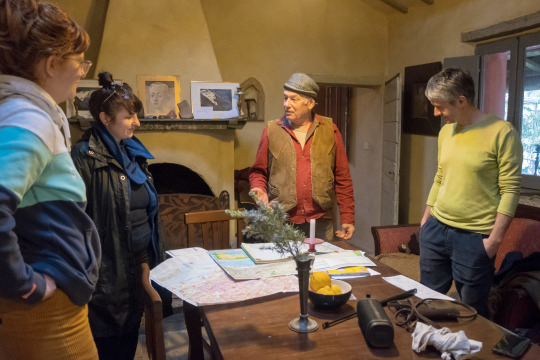
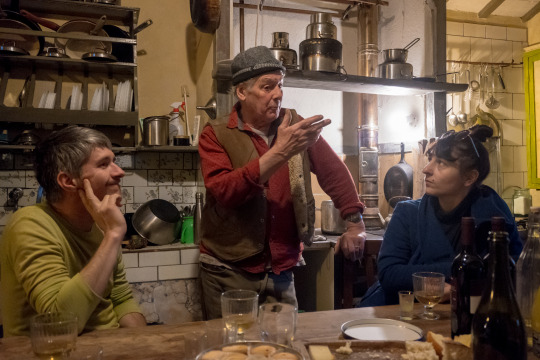
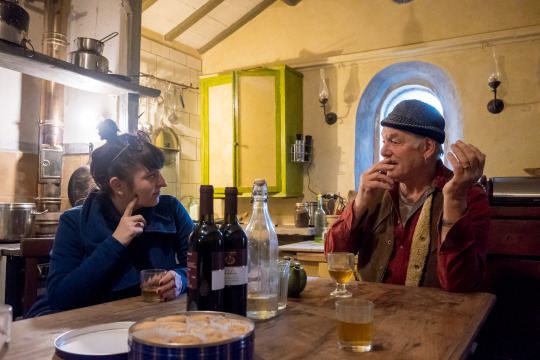
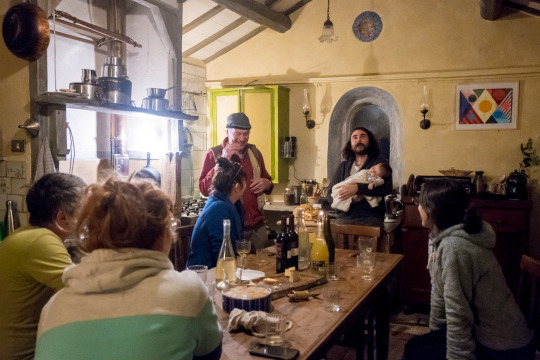
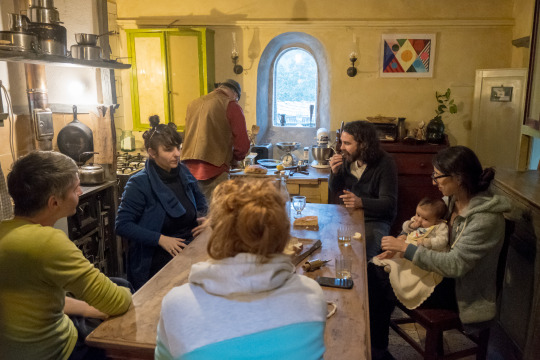

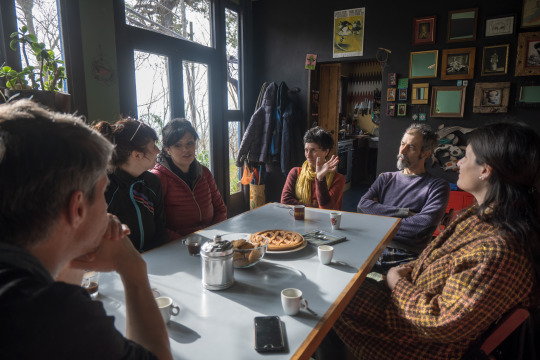


Proseguono per gli artisti rumeni in residenza al Teatro Dimora gli incontri con la hosting community di Mondaino. In questi giorni Catinca Drăgănescu, Oana Hodade e Mihai Păcurar sono stati ospitati nelle case di abitanti che vivono nei territori più periferici: alcuni provengono dall’Estero alcuni da altre zone d’Italia e hanno scelto le campagne dell’entroterra marchignolo per sviluppare vite alternative alla città o alla direzione che sta prendendo la società oggi. Gli artisti hanno così incontrato Phelan, un pittore londinese che da decenni è parte della comunità mondainese, Gaia e Alex, della riviera lei e canadese lui, che insieme al piccolo Zeno hanno lasciato Bologna per costruire qui le loro vite e infine Anastasia e Oreste, della riviera lei e del Nord Italia lui che hanno scelto la campagna moindainese per crescere le figlie e portare avanti la loro attività di artisti e artigiani.
Tutti loro hanno aperto le porte delle loro case e accolto gli artisti offrendo loro colazioni e apertivi, biscotti casalinghi e focacce, vino autoprodotto e pane fatto a mano sullo stile delle pagnotte ricovate negli affreschi di Pompei. E soprattutto hanno condiviso le loro storie, le loro scelte e avventure gettando così nuovi semi per la raccolta drammaturgia che gli artisti stanno portando avanti in questi giorni, collezionando parole e temi, racconti di vita e utopie.
Con noi Denisa, una ragazza rumena che da anni vive a Mondaino con la sua famiglia, che ci ha accompagnato supportandoci nelle traduzioni e condividendo la sua stessa esperienza di vita.
Molti sono i temi emersi dalle conversazioni, strettamente connessi alla ricerca che gli artisti stanno portando avanti per il loro progetto The future belongs to those who hope: l’utopia come possibilità di una vita alternativa, la quotidiana routine in campagna tra arte e natura, l’abitudinarietà cittadina tra stasi ed euforia, il cambiamento climatico e il progressivo abbandono dei piccoli paesi dell’entroterra, scardinare la centralità del centro e la delocalizzazione delle periferie, le scuole libertarie e le scuole pubbliche, Ivan Illich e La descolarizzaizone, la campagna e il sogno di una vita comunitaria, accoglienza e ospitalità per lo “straniero” che arriva da fuori, ma solo all’inizio poi la comunità si chiude su stessa, il ritorno alla natura come luogo dove immaginare la crescita dei figli, La Coscienza di Zeno e lo stoicismo comunista, guardare al passato per andare avanti, Mondaino come utopia e la necessità di parlare con le persone, la scoperta della campagna e dello spazio aperto e l’incontro con la comunità di Mondaino, reinventarsi ogni giorno imparando nuovi mestieri.
E sulla domanda “Quale futuro si immagina per Mondaino?” i dialoghi si sono chiusi tra abbracci e ringraziamenti con la promessa di ritrovarsi in piazza a Mondaino o all’incontro pubblico che gi artisti faranno il 5 marzo prossimo.
**********************************************************************************************
The meetings with the hosting community of Mondaino continue for the Romanian artists in residence at L’Arboreto Teatro Dimora. In these days Catinca Drăgănescu, Oana Hodade and Mihai Păcurar have been hosted in the homes of inhabitants living in the most peripheral territories: some come from abroad some from other parts of Italy and have chosen the countryside of the hinterland to develop alternative lives to the city or to the direction society is taking today. The artists thus met Phelan, a Londoner painter who has been part of the community of Mondaino for more than 30 years; Gaia and Alex, she from the Riviera and he from Canadian, who together with little Zeno left Bologna to build their lives here; and finally Anastasia and Oreste, she from Rimini and he from Northern Italy, who chose the Moindainese countryside to raise their daughters and carry on their business as artists and artisans.
They all opened the doors of their homes and welcomed the artists by offering them breakfasts and apertifs, homemade cookies and focaccia, self-made wine and handmade bread in the style of the loaves of bread found in the frescoes of Pompeii. Most importantly, they shared their stories, choices and adventures thus sowing new seeds for the dramaturgy collection that the artists are carrying out these days, collecting words and themes, life stories and utopias.
With us was Denisa, a Romanian girl who has been living in Mondaino for years with her family, who accompanied us by supporting us in the translations and sharing her own life experience.
Many themes emerged from the conversations, closely related to the research the artists are carrying out for their project The future belongs to those who hope: utopia as the possibility of an alternative life, the daily routine in the countryside between art and nature, city habit between stasis and euphoria, climate change and the gradual abandonment of small inland towns, unhinging the centrality of the center and the delocalization of the suburbs, libertarian schools and public schools, Ivan Illich and The de-schooling, the countryside and the dream of community life, welcome and hospitality for the "stranger" who arrives from outside, but only at the beginning then the community closes in on itself, the return to nature as a place to imagine the growth of children, Zeno's conscience and communist stoicism, looking to the past to move forward, Mondaino as utopia and the need to talk to people, the discovery of the countryside and open space and the meeting with the community of Mondaino, reinventing oneself every day by learning new trades.
And on the question "What future do you envision for Mondaino?" the dialogues closed between hugs and thanks with a promise to meet again in the square in Mondaino or at the public meeting that the artists will make next March 5.
#residenze 2023#catinca draganescu#right to the future#the future belongs to those who hope#stronger peripheries#performing arts
3 notes
·
View notes
Photo
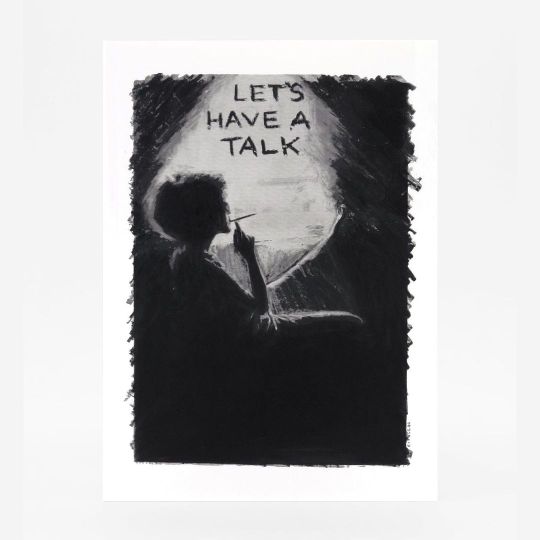
Spreads from 'Let's Have a Talk: Conversations with Women on Art and Culture, Interviews by Lauren O'Neill-Butler,' launching today, 5/15 from 3–5 PM @artbookps1 Bookstore For this in-person event, O’Neill-Butler will be in conversation with art historian and curator Katy Siegel, discussing the book and the art of the interview. The talk will be followed by a drink special hosted by @minas.nyc restaurant, across the hall from the Bookstore. Interviewees include: Judy Chicago, Shannon Ebner, Carolee Schneemann, Lucy R. Lippard, Joan Semmel, Liz Deschenes, Eleanor Antin, Andrea Fraser, Anohni, Claudia Rankine, Lorrie Moore, Adrian Piper, fierce pussy, Nan Goldin, Nell Painter, Frances Stark, Sara Greenberger Rafferty, Alex Bag, Agnès Varda, Lisi Raskin, Mary Mattingly, Carol Bove, Jennifer West, Aki Sasamoto, Mary Ellen Carroll, Rebecca Solnit, Rita McBride and Kim Schoenstadt, Karla Black, Julia Bryan-Wilson, Lynda Benglis, Sturtevant, Rachel Foullon, Ellie Ga, Lisa Tan, Mira Schor, Jo Baer, Ruby Sky Stiler, Suzanne Lacy, Rebecca Warren, Katy Siegel, Marlene McCarty, Rachel Mason, Mary Kelly, Dianna Molzan, Lynne Tillman, Polly Apfelbaum, Jesse Jones, Dorothea Rockburne, Sarah Crowner, Lucy Skaer, Sophie Calle, Mary Beth Edelson, W.A.G.E., Mary Heilmann, Pauline Oliveros, Kathryn Andrews, Jessamyn Fiore, Aura Rosenberg, Lucy McKenzie, Rhonda Lieberman, Lucy Dodd, Hong-Kai Wang, Sakiko Sugawa, Beverly Semmes, Virginia Dwan, Jeanine Oleson, Tauba Auerbach, Renee Green, Iman Issa, Monir Shahroudy Farmanfarmaian, Joan Jonas, Yoko Ono, Donna J. Haraway and more. #letshaveatalk #laurenoneillbutler #katysiegel @karmakarma9 @karmabookstore @loneillbutler @katysiegel.88 #artbookevents https://www.instagram.com/p/CdlXbMxL4Ub/?igshid=NGJjMDIxMWI=
5 notes
·
View notes
Photo

Jean-Léon Gérôme (French, 1824 - 1904)
Femmes au bain, 19th century
-
Slavery gave rise to the figure of the Odalisque, that is the beautiful, white slave girl, a figure of quintessential beauty.
In the late 18th century Johann Friedrich Blumenbach, the father of physical anthropology, the father of scientific anthropology, an 18th century German scholar, assigned the name Caucasian to the people living in western Europe, to the River Ob in Russia to northern Africa, and to India. He called the people in Europe, over to India, well into Russia and North Africa, Caucasians because they were the most beautiful in the world. Blumenbach enjoyed a scholarly reputation that gave his designation enormous heft and it got picked up very quickly.
Immanuel Kant stated that the Caucasians, the Georgians, the Circassians, sell their children, particularly their girls to the Turks, the Arabs, and the Persians, for reasons of eugenics, that is, to beautify the race. The idea of the beauty of Caucasians is linked with the idea of the slavery of Caucasians. Before the Atlantic slave trade to the western hemisphere shaped our ideas about what slave trades are all about, there was slave trade from this part of the world, that goes back to before the reaches of time.
Herodotus writing in the fifth century BC, writing about the enumeration of taxes and tributes paid to the Persian kingdom, collected from the lands it had controlled and the lands even far away in the distance. He said that the voluntary contribution was taken from the Colchians, that is the Georgians, and the neighboring tribes between them and the Caucasus, and it consisted of and still consists of (that is in the 5th century BC) every fourth year 100 boys and 100 girls. This was before Herodotus could even see the beginnings of it. Herodotus also mentioned the tribute from the southern most part of the edges of the Persian world and that was for the people called Ethiopians, what they owed was gold and ivory, people were not mentioned. So, the Black Sea Slave trade was the slave trade in the western world until the 15th century when the Ottomans captured Constantinople and cut the Black Sea off from western Europe. At that point, 15th century, the Atlantic slave trade becomes the western slave trade.
Daniel Edward Clarke, our Cambridge don, also located Circassian beauty, in the enslaved. “The Cicassians frequently sell their children to strangers, particularly to Persians and Turkish Seraglios.” He speaks of one particular Circassian female who was 14, who was conscious of her great beauty, who feared her parents would sell her according to the custom of the country. The beautiful young slave girl became a figure, and she had a name; Odalisque. She combines the powerful notions of beauty, sex, and slavery. Ingres, Jerome, Powers and Matisse specialized in Odalisque paintings.
The figure of the Odalisque faded from memory as the Black Sea slave trade ended in the late 19th century, and the Atlantic slave trade overshadowed that from the Black Sea. Today, the word slavery invariably leads to people of African descent. Americans seldom associate the word Odalisque with with slavery in the Americas. Today many American painters use Odalisque figures, Michalene Thomas for instance who has done a series of what she calls American Odalisque. But the phrase and the figure of the Odalisque has lost its association with slavery. And now in American art history and in contemporary American art, Odalisque simply refers to a beautiful woman, usually unclothed.
If you want to learn more, listen to professor Nell Painter of Princeton University in the YT lecture “Why White People are Called Caucasian.”
#Jean-Léon Gérôme#Gerome#art#french art#france#french#Femmes au bain#white slaves#black sea slave trade#europe#european#europa#fine arts#world history#caucasian
46 notes
·
View notes
Text
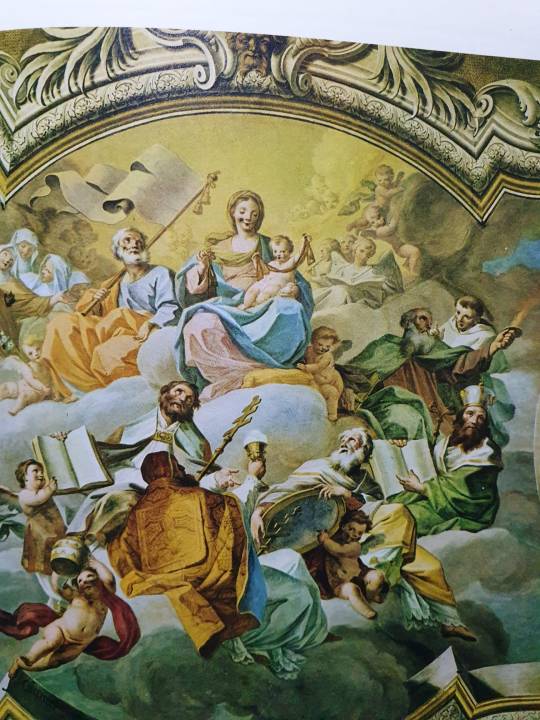

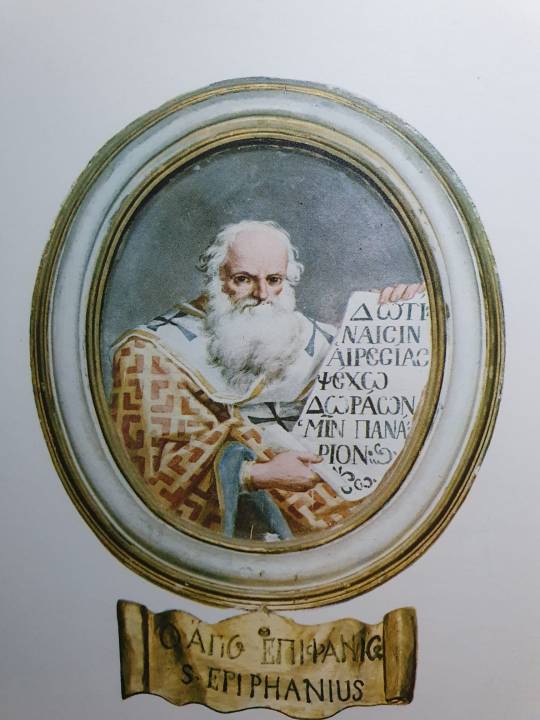
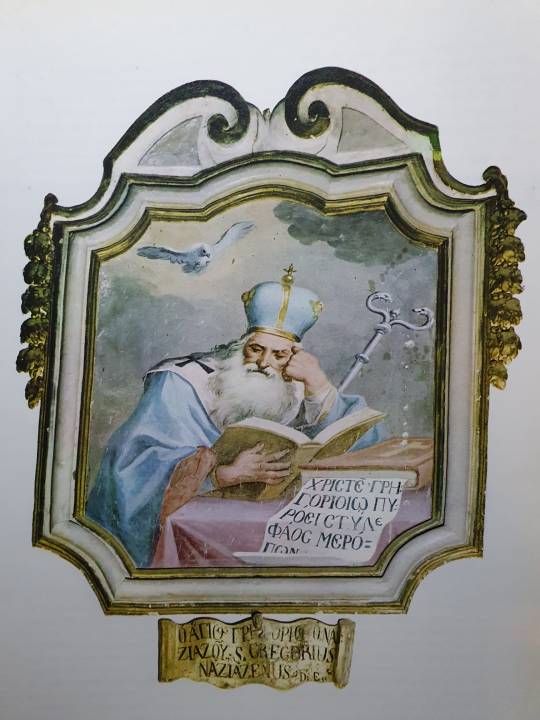




Affreschi di Olivio Sozzi (Catania 1690-Ispica 1765).
Poco prima del grande terremoto che distrusse tutta la Sicilia orientale, nasce Olivio Sozzi, uno dei pittori siciliani più grandi del suo tempo (1690-1765). Siamo in un periodo che non possiamo definire felice per l’isola che tra peste, terremoti e guerre vede le città spopolarsi o ridursi a cumuli di macerie. Eppure è un momento di grande fermento, di innovazione con l’introduzione del barocco e di rinnovamento con città ricostruite secondo dettami illuministici. Tra gli autori di questo disperato (perché nasce dalla distruzione) rinnovamento (perché ricrea e svecchia) c’è Olivio Sozzi. Come molti grandi siciliani l’artista cresce innestando sul talento e l’abilità artistica siciliani il respiro europeo formandosi a Roma. Dalla grande e classica città che stava anch’essa risorgendo nel Barocco, Sozzi acquisisce le forme, il gusto, il respiro universale. Tornato in Sicilia e uno dei motori della primavera artistica che nell’isola ripara i danni del triste inverno che aveva cancellato secoli di arte e di vicende storiche. La sua attività si svolge nelle città più ricche di allora, Palermo, Catania, Messina e nelle loro province spaziando dagli affreschi presso le iconiche chiese ortodosse della provincia Palermitana, fino alle rinascenti grandi chiese e cattedrali del siracusano e del catanese. Sozzi non ha l’aerea gioiosa bellezza del Borremans, con le sue leggiadre sante di bell’aspetto e i suoi cieli infiniti, è più formale, più iconico e tradizionale. Ma le sue madonne hanno l’eleganza e la perfezione dei classici, esaltano la luminosa concezione che il bello sovrasta ogni imperfezione ed orrore che la vita o la natura potrebbero darci.
Frescoes by Olivio Sozzi (Catania 1690-Ispica 1765).
Shortly before the great earthquake that destroyed all of eastern Sicily, Olivio Sozzi was born, one of the greatest Sicilian painters of his time (1690-1765). We are in a period that we cannot define as happy for the island which, between plague, earthquakes and wars, sees the cities depopulated or reduced to piles of rubble. Yet it is a time of great turmoil, of innovation with the introduction of the Baroque and of renewal with cities rebuilt according to the dictates of the Enlightenment. Among the authors of this desperate (because it arises from destruction) renewal (because it recreates and rejuvenates) is Olivio Sozzi. Like many great Sicilians, the artist grew up by grafting the European flavor onto Sicilian talent and artistic ability, training in Rome. From the great and classical city which was also resurrecting in the Baroque, Sozzi acquired the forms, the taste, the universal breath. Having returned to Sicily, he is one of the driving forces of the artistic spring that repairs the damage of the sad winter on the island which had erased centuries of art and historical events. His activity took place in the richest cities of the time, Palermo, Catania, Messina and in their provinces, ranging from frescoes in the iconic Orthodox churches of the Palermo province, to the resurgent large churches and cathedrals of Syracuse and Catania. Sozzi does not have the airy joyful beauty of Borremans, with his graceful good-looking saints and his infinite skies, he is more formal, more iconic and traditional. But his madonnas have the elegance and perfection of the classics, they enhance the luminous concept that beauty surpasses every imperfection and horror that life or nature could give us.
10 notes
·
View notes
Link
0 notes
Text
Pistoletto impazza
Specchio, specchio delle mie brame
Chi è il più bello del reame?
Sei tu, sei tu Sansone
Il più bello del rione1
Da Il Mistero buffo di Dario Fo

Richard Serra: Spirale
Faccio fatica a prendere la cosa sul serio, c’è da non credere ai propri occhi, “un grande evento”: su Artribune scorrono le immagini del rogo della Grande Venere degli stracci di Napoli, in piazza del municipio davanti al Maschio Angioino, e poi sulla performance del Grande Autore alla stampa. Sansone ci spiega, magnanimo, che occorre un po’ di pietà nei confronti del miserabile barbone, in carcere perché ha appiccato fuoco alla sua gigantesca scultura. Un tempo, quando ancora non s’era bevuto il cervello (ma sapeva già comunque da che parte era imburrato il proprio panino), in formato ridotto l’aveva chiamata “dell’Arte Povera” (i compagni della rispettabilissima scuderia di cui faceva parte - staffiere Germano Celant- avevano mal digerito lo scippo d’un cotale titolo). Lungi da me i sospetti di orchestrazione dell’evento, del “rumore”, assicurato in tempi come questi, oltre che infernali per clima, funzionali a tutti i “gazzettieri” (Carmelo Bene). Ma, non bastavano la Mela di Piazza Diaz a Milano, la “Donna col mal di testa” a Firenze (Porta Romana), la miriade di Terzi paradisi con i quali ha cosparso mezza Italia (ma tutti con la furbata della tripla giravolta del simbolo (eh, si sa, occorre qualcosa di nuovo, una zampata di genio! Non mi chiamo Michelangelo?)?

FDL Specchio Roma,Nuova Pesa, 1996
Per carità non facciamo paragoni, almeno questo! E’ da quel dì che Pistoletto ha subìto la metamorfosi. Qualcuno mi sollecita a essere serio, a trattare questa tragedia col rispetto dovuto a un artista che una volta aveva pur prodotto qualcosa di buono (che so, il lavoro per Arte all’Arte al Chiostro di Volterra, il mappamondo rimpicciolito di giornali, l’ultima sua mostra di grandi specchi da Sergio Casoli a Milano, gli autoritratti coi riflessi nelle bacinelle della Camera oscura, forse qualcos’altro che ora non ricordo); devo impegnarmi. Onore al merito, grande o piccino che sia (lo decideranno i posteri), ma le origini di cotale ubriacatura mentale sono già a metà della carriera. Gli specchi serigrafati con cui ha cosparso il cosiddetto Mondo dell’arte (che per la verità è molto piccolo e si specchia solo in se stesso) erano una genialata, titillavano il narcisismo di tutti (”ci siamo anche noi”, colleghi, amici, gente di potere ecc), una trovata popartistica anticipatrice del postmodern. L’arte, a partire dall’impressionismo, s’era buttata alle spalle la vecchia pratica della ritrattistica, che aveva dato da mangiare un po’ a tutti per almeno cinque secoli, ma ci sono voluti Warohl e Pistoletto a rimetterla in auge: quel Mondo non ne poteva più di cotanto rigore, Pollock, gli Action Painters e poi questi fracassoni di poveristi, per non parlare di tipi come Agnetti o Mauri!

Richard Serra, Spirale a NY, 2001
E’ un fatto che la genialata era funzionale al mercato: troppa fatica mantenere la tensione della creazione e allora mettiamoci a scopiazzare in giro: gli stracci sono di Boltanski (altra levatura, altro spessore), le rotture (beh, lasciamo andare, siamo in tanti; per citarne solo uno: Mario Merz), la Venere stessa è pescata nell’armamentario del ben più serio Paolini. Devo proseguire? Per carità il furto deriva anche dall’ammirazione per un collega; chi non ruba, chi non ha mai rubato? Ma a guardar bene nessun furto serio riesce in pieno, per lo meno a chi non può dimenticare la propria originalità, la propria ossessione, la propria tensione. E’ il rispetto per il linguaggio a giustificalo, per l’arte. Che non appartiene a nessuno.
Ripescarlo oggi nella cloaca maxima del mercato è diventata un’impresa.
Sì, il discorso andrebbe approfondito, ma il rogo non lo merita.

Richard Serra, Spirale, Biennale di Venezia
1 Sanità del, questo sì Grande, Edoardo De Filippo
1 note
·
View note